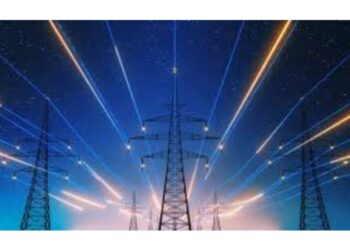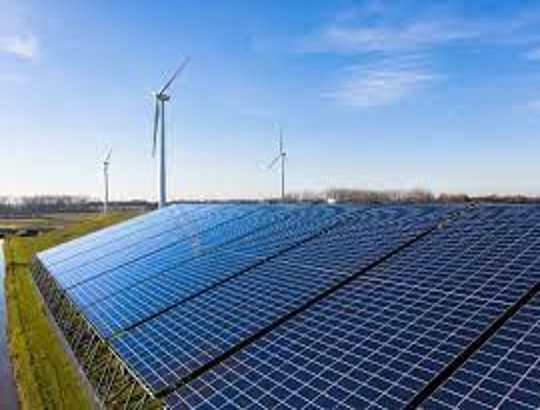In a world grappling with climate change and environmental degradation, the need for sustainable practices in every sector, including agriculture, has never been more pronounced. In India, where agriculture is not just an occupation but a way of life for millions, the adoption of eco-friendly farming practices is pivotal. The Faster Adoption and Manufacturing of Hybrid and Electric Vehicles (FAME) scheme, initiated by the Government of India, has evolved to its third phase, FAME-III, with an ambitious aim to electrify the transport sector. However, one critical area that demands attention for a comprehensive green transformation in agriculture is the inclusion of electric tractors.
The Green Revolution and the need for a Second Act
The Green Revolution of the mid-20th century brought about a transformative change in Indian agriculture. It significantly increased crop yields, ensuring food security for a burgeoning population. However, it came at a cost — intensive use of chemical fertilizers, pesticides, and non-renewable energy sources. Now, in the 21st century, as we stand at the cusp of a new era, the need for a second Green Revolution is apparent. This revolution, however, must be green not only in terms of increased productivity but also in its environmental impact.
FAME – III: Paving the Way for Sustainable Transportation
FAME – III is a visionary initiative aiming to accelerate the adoption of electric vehicles (EVs) across various sectors, including public transport, two-wheelers, and three-wheelers. The primary objectives of the third phase of the government’s flagship scheme include reducing vehicular emissions, promoting energy efficiency and creating a sustainable ecosystem for EVs. While the focus has largely been on electric cars and two-wheelers, it is imperative to broaden the horizon to include one of the essential components of Indian agriculture – tractors.
The Agriculture – Electric Tractor Nexus: The need for Electric Tractors
Agriculture is a major contributor to India’s GDP, providing livelihoods to a substantial portion of the population. However, traditional farming practices often rely on outdated and environmentally harmful methods. Electric tractors present a game-changing solution. By integrating electric tractors into the FAME-III framework, the government can address several pressing issues which are as follows:
⦁ Environmental Impact: Traditional tractors powered by diesel contribute significantly to air pollution and greenhouse gas emissions. The inclusion of electric tractors in FAME-III aligns with the broader goal of reducing carbon footprints and fostering sustainable farming practices. Electric tractors produce zero tailpipe emissions, reducing air pollution in agricultural areas and safeguarding the health of farmers and rural communities. This aligns with India’s commitment to lowering its overall carbon footprint and mitigating climate change.
⦁ Cost Efficiency: While the initial cost of electric tractors may seem higher, they offer long-term benefits through reduced operating costs. The cost of electricity per unit is generally lower than diesel, leading to substantial savings in the total cost of ownership. Moreover, electric tractors have fewer moving parts, resulting in lower maintenance expenses over their lifecycle. This cost efficiency can make them an attractive proposition for farmers in the long run, contributing to the economic viability of agriculture.
⦁ Energy Independence: Electric tractors can be charged using renewable energy sources, such as solar or wind power, promoting energy independence for farmers. This not only reduces dependence on fossil fuels but also provides a reliable and sustainable source of energy for agricultural operations. As India seeks to diversify its energy mix, integrating electric tractors into FAME-III contributes to the larger goal of a greener and more sustainable energy future.
⦁ Technology Leap: The inclusion of electric tractors in FAME-III fosters innovation and technological advancement in the agricultural sector, enabling farmers to optimize resource utilization, minimize waste and enhance overall agricultural productivity. Electric tractors come equipped with advanced features such as precision farming, smart sensors and automation, enhancing overall efficiency and productivity. By embracing these technological leaps, Indian agriculture can become more competitive on the global stage while ensuring food security at home.
Challenges and Solutions
While the idea of electric tractors holds immense promise, there are challenges that need to be addressed for a successful integration into Indian agriculture. To overcome these hurdles, the government should consider implementing the following:
⦁ Charging Infrastructure: The establishment of a robust charging infrastructure in rural areas is paramount for the success of electric tractors. FAME-III should allocate resources for the development of charging stations in agricultural regions, ensuring that farmers have easy access to charging facilities.
⦁ Government Support: The government’s support through FAME-III can act as a catalyst for the widespread adoption of electric tractors. Subsidies, incentives and favourable policies can encourage farmers to make the transition to sustainable and environmentally friendly agricultural practices. This support is crucial in overcoming initial barriers and creating a conducive environment for the acceptance of electric tractors.
⦁ Affordability and Awareness: Farmers need to be educated about the benefits of electric tractors, and measures should be taken to make them financially accessible. Conduct awareness programs and training sessions to educate farmers about the benefits of electric tractors and how to effectively use them for maximum productivity. Subsidies, low-interest loans and awareness campaigns can play a crucial role in overcoming these barriers.
⦁ Range and Battery Technology: Improvements in battery technology are essential to address concerns related to the range of electric tractors. Research and development efforts should focus on enhancing battery efficiency and durability to meet the demanding requirements of agricultural operations.
The inclusion of electric tractors in FAME-III is not just a strategic move but a necessity for fostering sustainable agriculture in the country. By taking this step, the government can align the agricultural sector with the broader goals of environmental conservation and sustainable development. As we strive for a greener and more sustainable future, the ploughing in of electric tractors into FAME-III is indeed a must for a good take-off towards a brighter and cleaner agricultural landscape in India.












